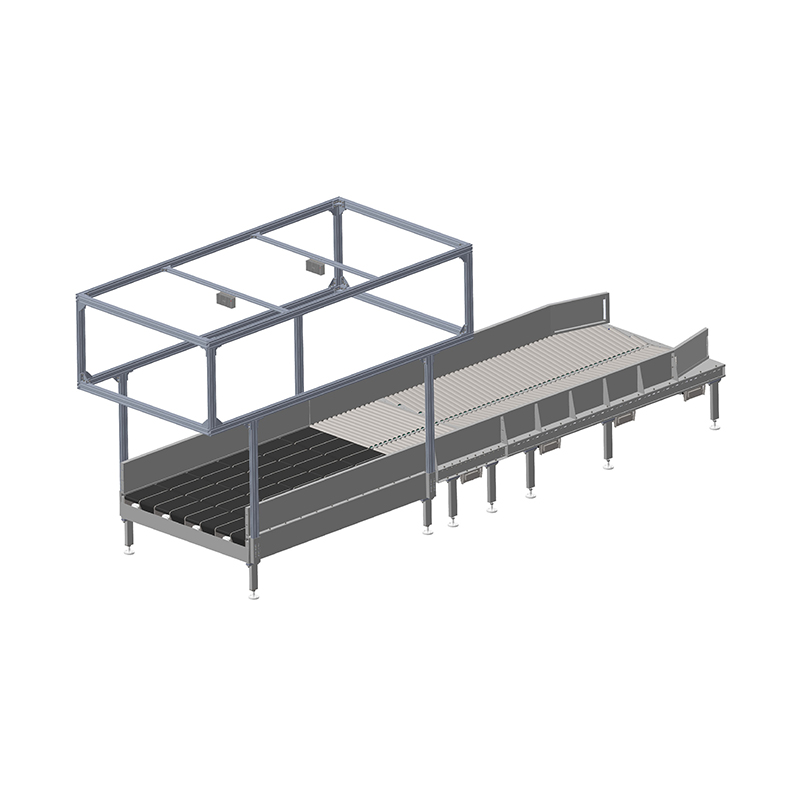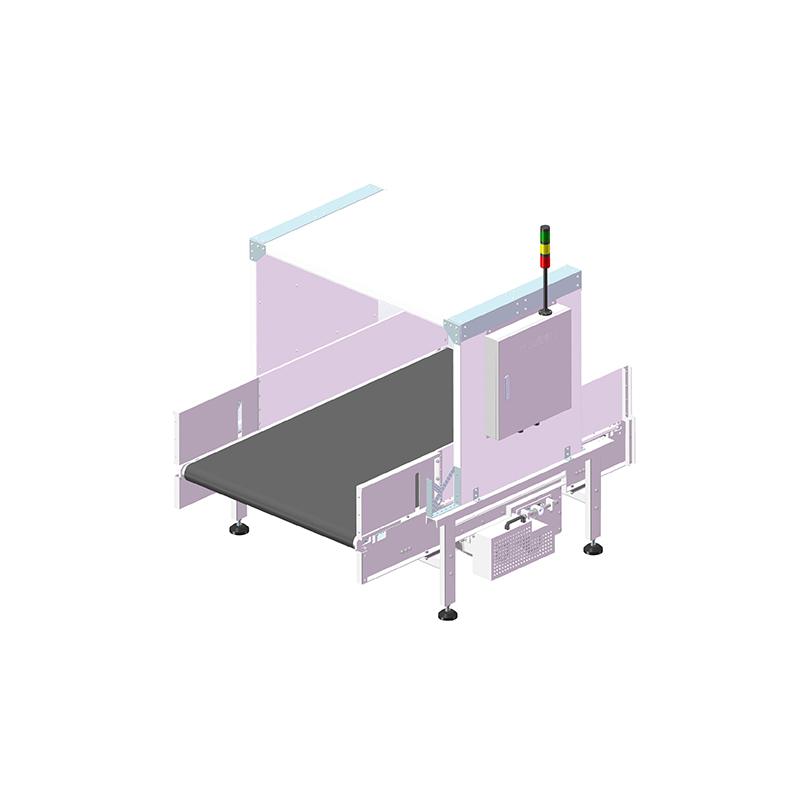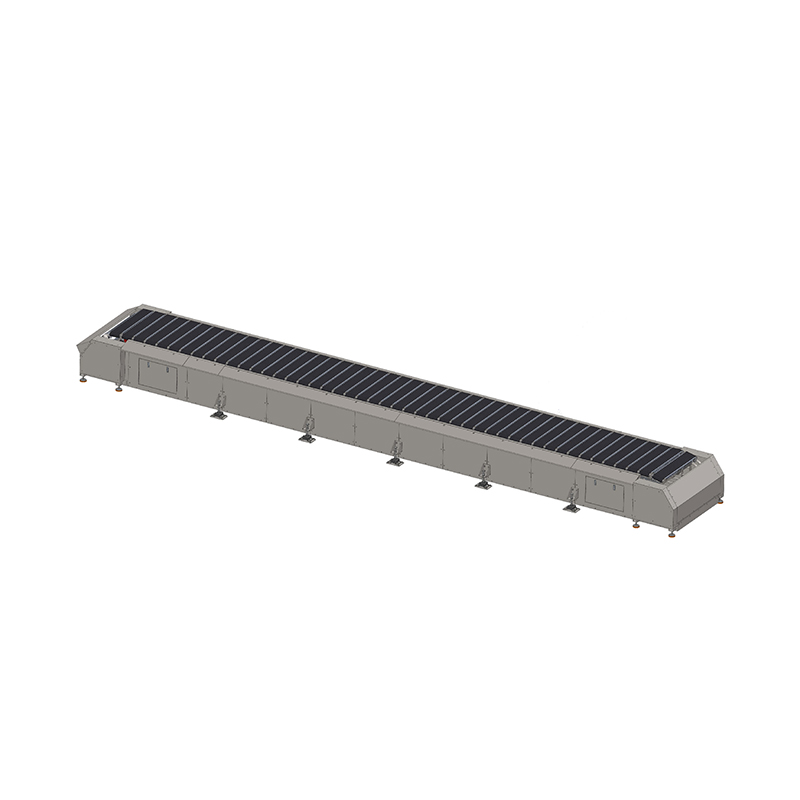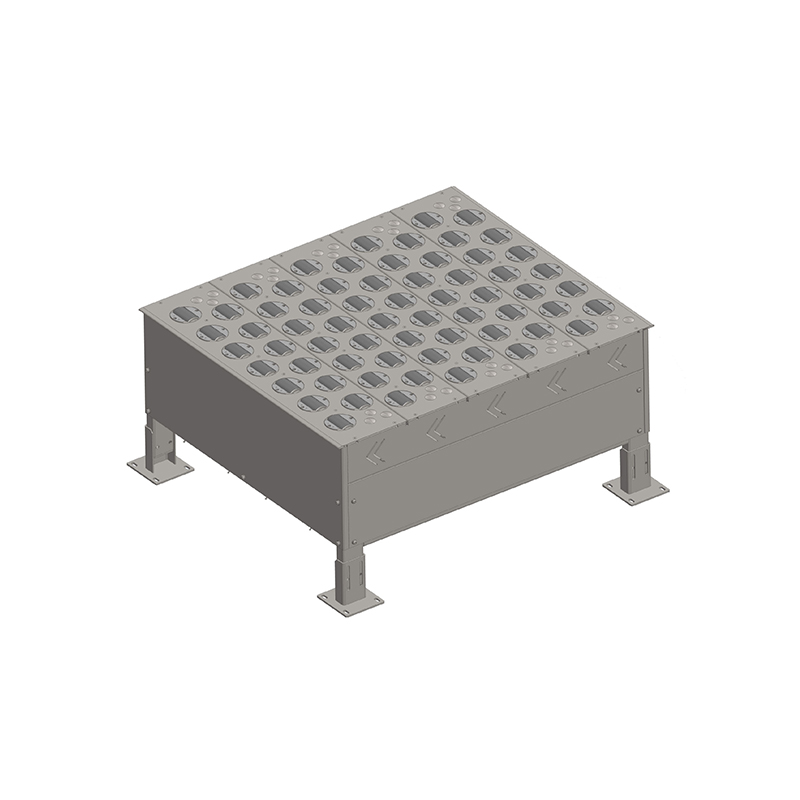Single-piece separation system: Let the package "queue in seconds" and reshape the new speed of express logistics!
Release Time : 2025-03-25
In the express logistics industry, the efficiency and accuracy of package processing are crucial. With the booming development of e-commerce, the number of packages has increased exponentially, and traditional processing methods face huge challenges. In order to solve this problem, the single-piece separation system came into being, which can effectively make the package "queue obediently" and improve logistics efficiency.

The single-piece separation system is an advanced automation equipment that can quickly and accurately identify and separate individual packages through high-precision sensors and intelligent algorithms. Its working principle is based on the comprehensive application of multiple technical means, including optical sensors, weight sensors, and image recognition technology. Optical sensors can detect the shape and size of the package, weight sensors are used to measure the weight of the package, and image recognition technology can identify the barcode or QR code on the package to obtain detailed information about the package.
When the package enters the entrance of the single-piece separation system, it will first be scanned by the optical sensor. These sensors can accurately measure the length, width, and height of the package and transmit the data to the control system in real time. The control system determines whether the package meets the standard size based on the preset parameters. If the package is too large or too small, the system will sound an alarm to remind the staff to handle it. At the same time, the weight sensor will weigh the package to ensure that the weight of the package is within a reasonable range. This step is important to prevent overweight packages from entering the system and causing damage.
Next, image recognition technology plays a key role. As the package moves on the conveyor belt, the camera captures the image of the package surface and analyzes it through image recognition software. The software can quickly identify the barcode or QR code on the package and extract relevant information such as the recipient address, sender address, package weight, etc. This information is transmitted to the database and compared and verified with the order information. Once the information is matched successfully, the system will assign a unique identifier to the package and record it in the system for subsequent tracking and management.
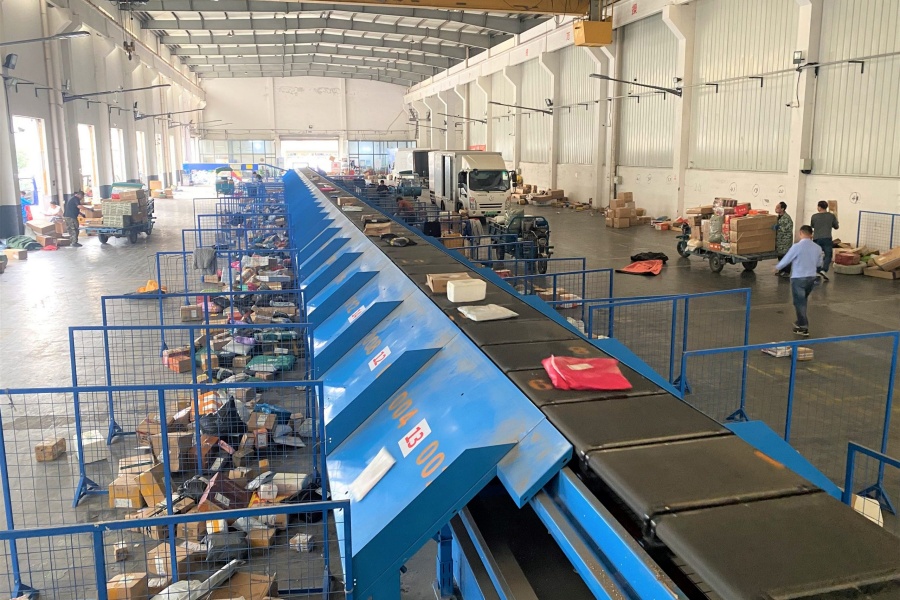
After completing the initial information collection, the single-piece separation system begins to separate and sort the packages. The system will assign the packages to different channels or areas based on factors such as the destination, weight, and size of the package. For example, lighter packages may be assigned to channels close to the exit, while heavier packages will be sent to areas dedicated to handling large items. This classification method not only improves the efficiency of package processing, but also reduces the error rate of manual operation.
In addition to the basic separation function, the single-piece separation system also has some advanced features. For example, it can adjust the sorting according to the priority of the package. For those packages that need to be processed urgently, the system will prioritize them and arrange them in the fast transportation channel. In addition, the system can also monitor the status of the package in real time, including environmental parameters such as location, temperature, and humidity. If an abnormal situation is found, such as too high or too low temperature, the system will automatically issue an alarm and take corresponding measures to deal with it.
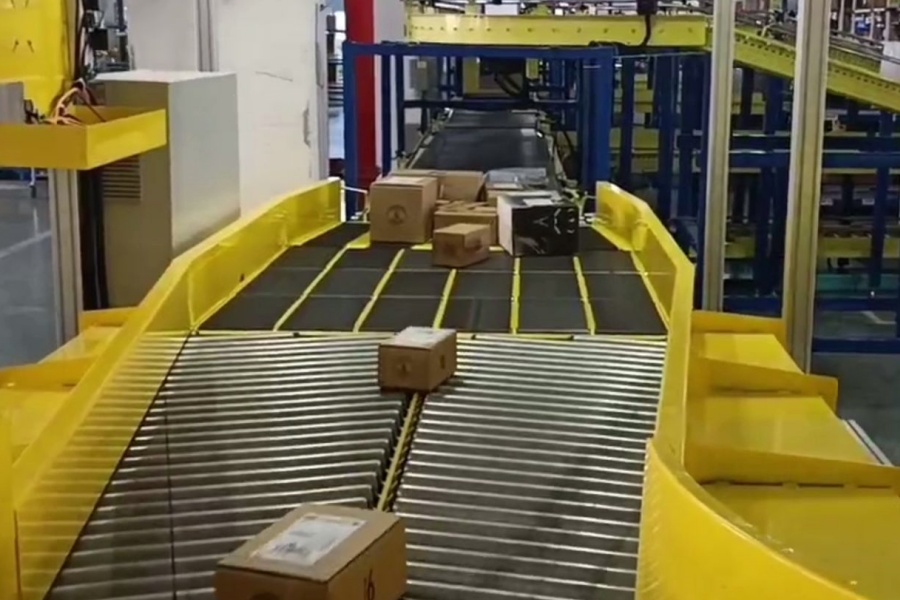
The application of the single-piece separation system brings many benefits. First, it greatly improves the efficiency of package processing. Compared with the traditional manual sorting method, the single-piece separation system can process a large number of packages in a short time with higher accuracy. This not only reduces labor costs, but also shortens the processing time of packages, allowing customers to receive goods faster. Secondly, the high degree of automation of the system reduces the possibility of human errors. In the traditional sorting process, due to manual fatigue or negligence, problems such as package loss and wrong delivery may occur. The single-piece separation system can almost avoid these problems through precise identification and separation technology, improving the quality and reliability of logistics services.
The single-piece separation system also has strong adaptability and flexibility. With the development of business and changes in demand, express companies can easily upgrade and adjust the system. Whether adding new functional modules or changing sorting rules, it can be achieved relatively easily. This provides enterprises with better development opportunities and can better cope with the challenges of market competition.
In actual applications, the single-piece separation system has been widely used in many express logistics companies. For example, some large e-commerce platforms handle millions of parcels every day, and the single-piece separation system has become an important tool for them to ensure efficient operation. By introducing this system, these companies can not only improve the processing speed of parcels, but also improve customer satisfaction and enhance market competitiveness.

The single-piece separation system also faces some challenges and limitations. On the one hand, the construction and maintenance costs of the system are high. It takes a lot of money to purchase advanced single-piece separation equipment, and the maintenance and maintenance of the equipment also requires professional technicians and cost support. This may be a big burden for some small businesses. On the other hand, the complexity of the system also increases the difficulty of operation. Although the single-piece separation system is highly automated, in actual operation, staff are still required to monitor and manage the system. If a fault or abnormal situation occurs, it needs to be handled in time, otherwise it may affect the normal operation of the entire logistics process.
Despite the challenges, the development prospects of the single-piece separation system are still broad. With the continuous advancement of technology, the performance and function of the equipment will continue to improve, and the cost is expected to gradually decrease. In the future, we can expect to see the emergence of more intelligent and efficient single-piece separation systems, which will bring greater impetus to the development of the express logistics industry.
As an advanced logistics equipment, the single-piece separation system provides an effective solution for the "obedient queuing" of parcels. It uses high-precision sensors and intelligent algorithms to achieve rapid and accurate identification and separation sorting of parcels, improving logistics efficiency and service quality. Although there are some challenges in the application process, with the continuous development and improvement of technology, the single-piece separation system will surely play a more important role in the future logistics industry, providing consumers with a more convenient and efficient logistics service experience.

The single-piece separation system is an advanced automation equipment that can quickly and accurately identify and separate individual packages through high-precision sensors and intelligent algorithms. Its working principle is based on the comprehensive application of multiple technical means, including optical sensors, weight sensors, and image recognition technology. Optical sensors can detect the shape and size of the package, weight sensors are used to measure the weight of the package, and image recognition technology can identify the barcode or QR code on the package to obtain detailed information about the package.
When the package enters the entrance of the single-piece separation system, it will first be scanned by the optical sensor. These sensors can accurately measure the length, width, and height of the package and transmit the data to the control system in real time. The control system determines whether the package meets the standard size based on the preset parameters. If the package is too large or too small, the system will sound an alarm to remind the staff to handle it. At the same time, the weight sensor will weigh the package to ensure that the weight of the package is within a reasonable range. This step is important to prevent overweight packages from entering the system and causing damage.
Next, image recognition technology plays a key role. As the package moves on the conveyor belt, the camera captures the image of the package surface and analyzes it through image recognition software. The software can quickly identify the barcode or QR code on the package and extract relevant information such as the recipient address, sender address, package weight, etc. This information is transmitted to the database and compared and verified with the order information. Once the information is matched successfully, the system will assign a unique identifier to the package and record it in the system for subsequent tracking and management.

After completing the initial information collection, the single-piece separation system begins to separate and sort the packages. The system will assign the packages to different channels or areas based on factors such as the destination, weight, and size of the package. For example, lighter packages may be assigned to channels close to the exit, while heavier packages will be sent to areas dedicated to handling large items. This classification method not only improves the efficiency of package processing, but also reduces the error rate of manual operation.
In addition to the basic separation function, the single-piece separation system also has some advanced features. For example, it can adjust the sorting according to the priority of the package. For those packages that need to be processed urgently, the system will prioritize them and arrange them in the fast transportation channel. In addition, the system can also monitor the status of the package in real time, including environmental parameters such as location, temperature, and humidity. If an abnormal situation is found, such as too high or too low temperature, the system will automatically issue an alarm and take corresponding measures to deal with it.

The application of the single-piece separation system brings many benefits. First, it greatly improves the efficiency of package processing. Compared with the traditional manual sorting method, the single-piece separation system can process a large number of packages in a short time with higher accuracy. This not only reduces labor costs, but also shortens the processing time of packages, allowing customers to receive goods faster. Secondly, the high degree of automation of the system reduces the possibility of human errors. In the traditional sorting process, due to manual fatigue or negligence, problems such as package loss and wrong delivery may occur. The single-piece separation system can almost avoid these problems through precise identification and separation technology, improving the quality and reliability of logistics services.
The single-piece separation system also has strong adaptability and flexibility. With the development of business and changes in demand, express companies can easily upgrade and adjust the system. Whether adding new functional modules or changing sorting rules, it can be achieved relatively easily. This provides enterprises with better development opportunities and can better cope with the challenges of market competition.
In actual applications, the single-piece separation system has been widely used in many express logistics companies. For example, some large e-commerce platforms handle millions of parcels every day, and the single-piece separation system has become an important tool for them to ensure efficient operation. By introducing this system, these companies can not only improve the processing speed of parcels, but also improve customer satisfaction and enhance market competitiveness.

The single-piece separation system also faces some challenges and limitations. On the one hand, the construction and maintenance costs of the system are high. It takes a lot of money to purchase advanced single-piece separation equipment, and the maintenance and maintenance of the equipment also requires professional technicians and cost support. This may be a big burden for some small businesses. On the other hand, the complexity of the system also increases the difficulty of operation. Although the single-piece separation system is highly automated, in actual operation, staff are still required to monitor and manage the system. If a fault or abnormal situation occurs, it needs to be handled in time, otherwise it may affect the normal operation of the entire logistics process.
Despite the challenges, the development prospects of the single-piece separation system are still broad. With the continuous advancement of technology, the performance and function of the equipment will continue to improve, and the cost is expected to gradually decrease. In the future, we can expect to see the emergence of more intelligent and efficient single-piece separation systems, which will bring greater impetus to the development of the express logistics industry.
As an advanced logistics equipment, the single-piece separation system provides an effective solution for the "obedient queuing" of parcels. It uses high-precision sensors and intelligent algorithms to achieve rapid and accurate identification and separation sorting of parcels, improving logistics efficiency and service quality. Although there are some challenges in the application process, with the continuous development and improvement of technology, the single-piece separation system will surely play a more important role in the future logistics industry, providing consumers with a more convenient and efficient logistics service experience.


